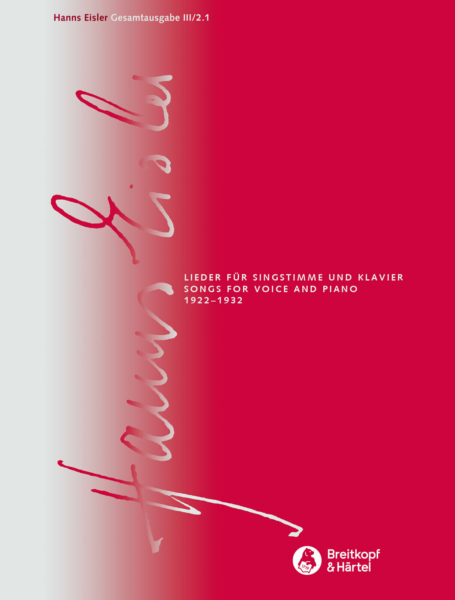Hanns Eisler (1898–1962) Hanns Eisler Gesamtausgabe (HEGA) – SON 513
herausgegeben von der Internationalen Hanns Eisler Gesellschaft
352 Seiten | 23 x 30,5 cm | 1.477 g | ISMN: 979-0-004-80372-1 | Hardcover
In Hanns Eislers Liedschaffen der Jahre 1922 bis 1932 manifestieren sich wie im Brennglas die Umbrüche im künstlerischen Selbstverständnis des Komponisten. Waren seine frühen Lieder ab 1917 noch stark von der Formensprache Hugo Wolfs und Gustav Mahlers beeinflusst, schlugen sich die 1919 begonnenen Lehrjahre des jungen Musikers bei Arnold Schönberg schon bald in einer deutlichen Umorientierung wider, die sich der neuen expressiven Ausdrucksmittel und der neuen Kompositionsweise der Zwölftontechnik bediente. Ebenso gründlich war Eislers etwa 1925 begonnene Abkehr vom avantgardistischen Stil Schönbergs und seine Hinwendung zu einer nach seiner Meinung zukunftsträchtigen proletarischen Musikkultur: Eislers politische Radikalisierung, flankiert von der Arbeit für die kommunistische Agitproptruppe „Das rote Sprachrohr“ und für die Parteizeitung der KPD „Die Rote Fahne“, führte ihn zu der neuen Zielsetzung, sein an der bürgerlichen Musikkultur geschultes kompositorisches Können den Lebensinteressen, ästhetischen Bedürfnissen und politischen Zielen des Proletariats dienstbar zu machen. Fortan verlegte er sich fast ausschließlich auf das Komponieren von Vokalmusik und wählte als Textvorlagen für seine Lieder vor allem politische Gedichte von Erich Weinert, Bertolt Brecht, Kurt Tucholsky, Walter Mehring und David Robert Winterfeld (alias Robert Gilbert alias David Weber).
Der vorliegende Teilband 2.1 der Lieder von Hanns Eisler enthält alle derartigen Kompositionen vom Zyklus op. 2 (1922) über die „Zeitungsauschnitte“ op. 11 (1925–27) bis zum „Lied der roten Flieger“ (1932). Die späteren von ihnen waren schließlich nicht mehr für den Konzertsaal, sondern für den Gebrauch im Film und in Theaterstücken, in Kabarettprogrammen und politischen Veranstaltungen bestimmt, sodass zu der traditionellen Besetzung für Singstimme und Klavier weitere Aufführungsvarianten traten, etwa in der Form des Wechselgesangs von Solist und Chor, was letztlich die Einbeziehung des Publikums, also die Entwicklung des Genres hin zum Massenlied möglich machte.










 Blättern
Blättern

